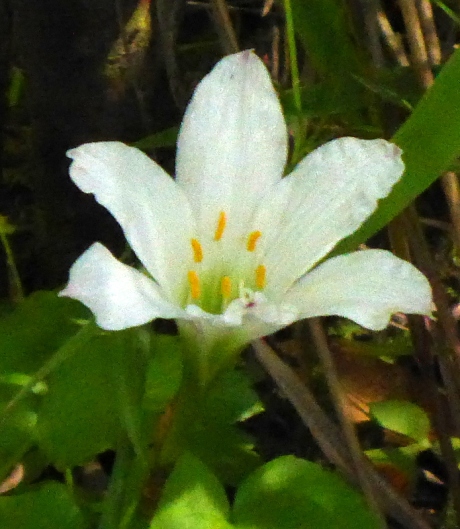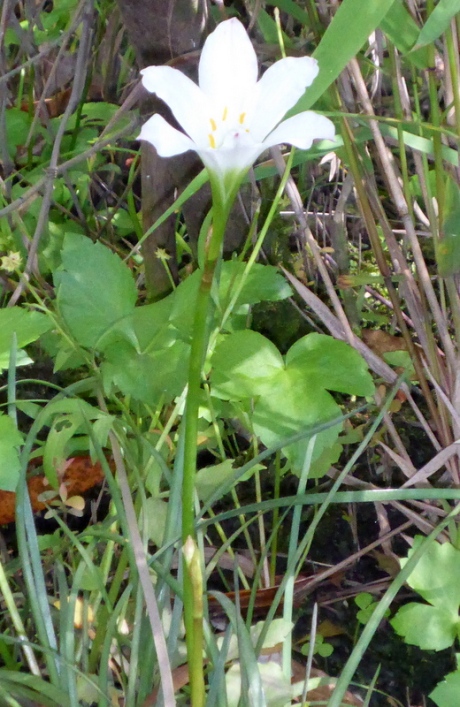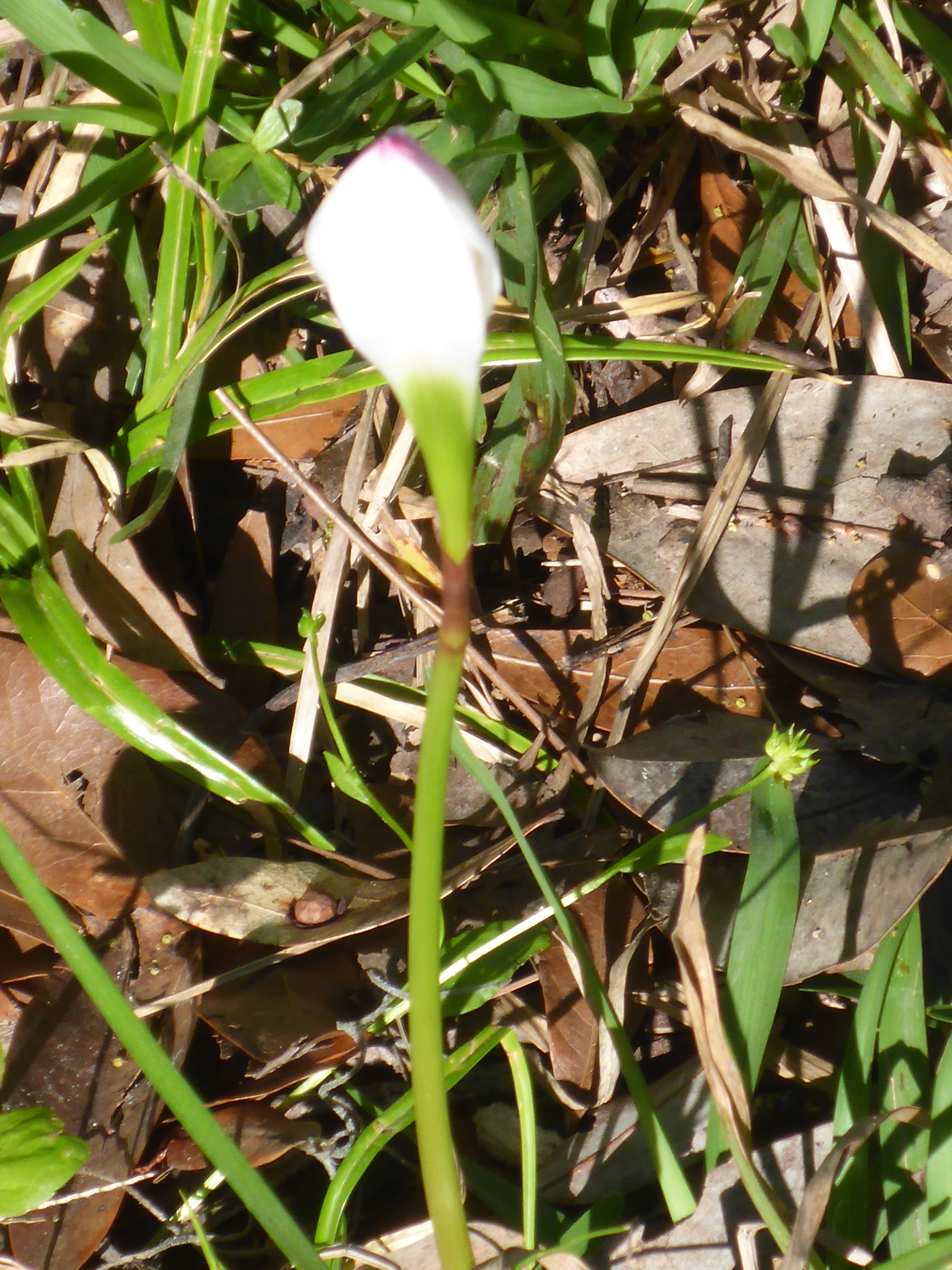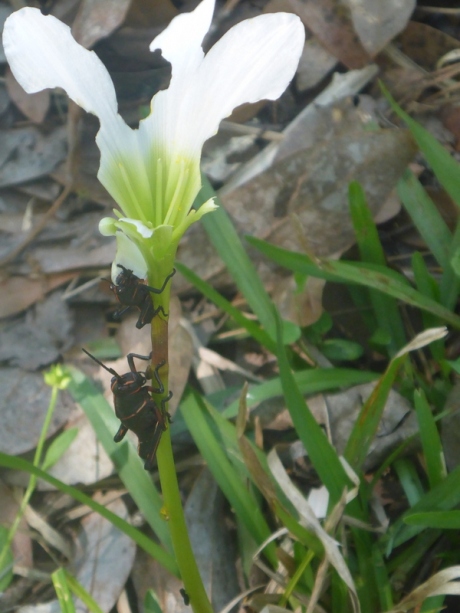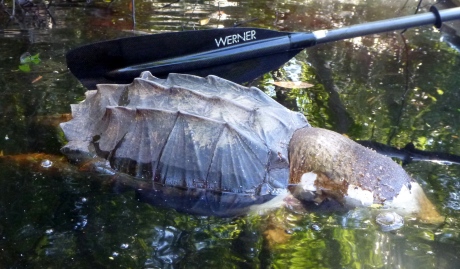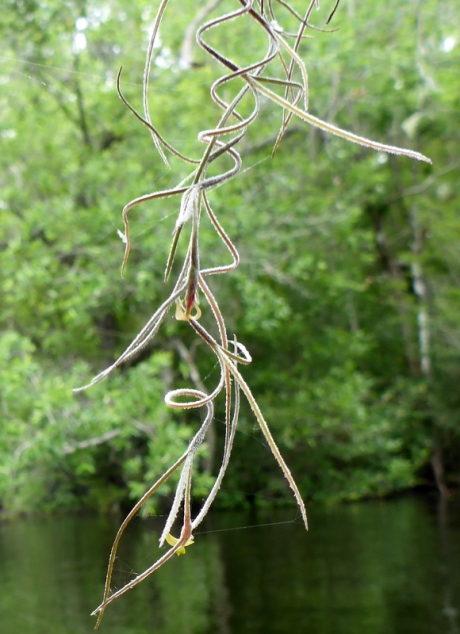
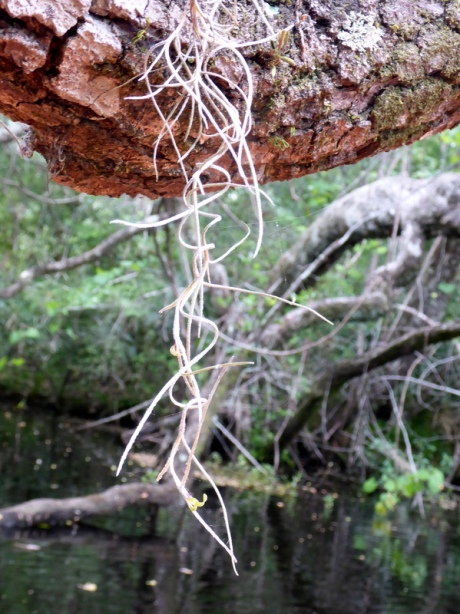
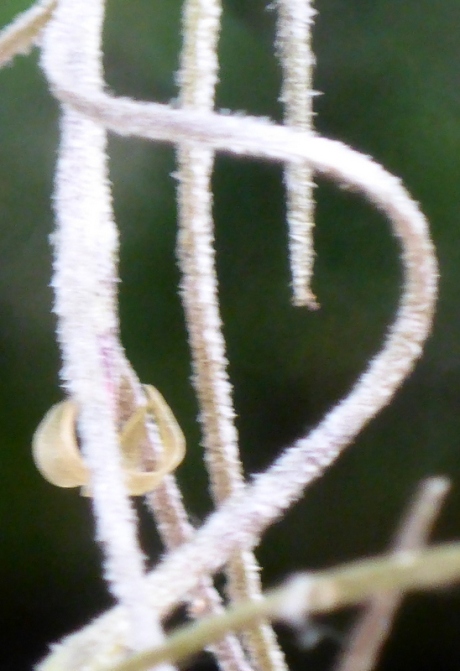
Tillandsia usneoidea
Perenniel,. forb/herb, vine
Native, L48, PR, VI
Spanish moss is an epiphytic bromeliad, a flowering plant which grows most often on trees. It is not a parasite (take nutrition away from trees), but rather uses the tree to support its growth. It has silvery-gray scales which capture water and air-borne nutrients.
The photos here show the 3 petaled flowers on the Spanish moss, which will eventually develop into seed capsules with about 20 seeds. The capsule when ready will eject the seeds into the air. Each seed is hairy to allow it to float on winds and secures itself until germination with root like fasteners. After germination, the moss adheres to the trees by its “branches”. The flowers have a noticeable scent at night.
The plant itself is used for nests by birds, which also helps in dispersion. The Seminole bat roosts in clumps of Spanish moss. Rat snakes may be found in thick stands. There is a species of jumping spiders (Pelegrina tillandsiae) which is found only on Spanish moss. Common lore cautions against contact with the moss because of chiggers or red bugs. Use of Spanish moss where skin contact will occur recommends steeping in boiling water or microwaving it.
Its use by native Americans was as fibres for bedding, floor mats and horse “blankets”. Twisted, they created cordage, which was used to lash poles for housing construction. It was mixed with clay for plastering the interior of houses and for fired pottery design. Dried moss was used for fireballs shot with arrows. It was boiled as a tea for chills and fever. The moss was also used as menstrual pads.
Contemporary use includes packing, decorative, mulch and mattress stuffing.
Air pollution has resulted in diminishing populations in certain cities.

